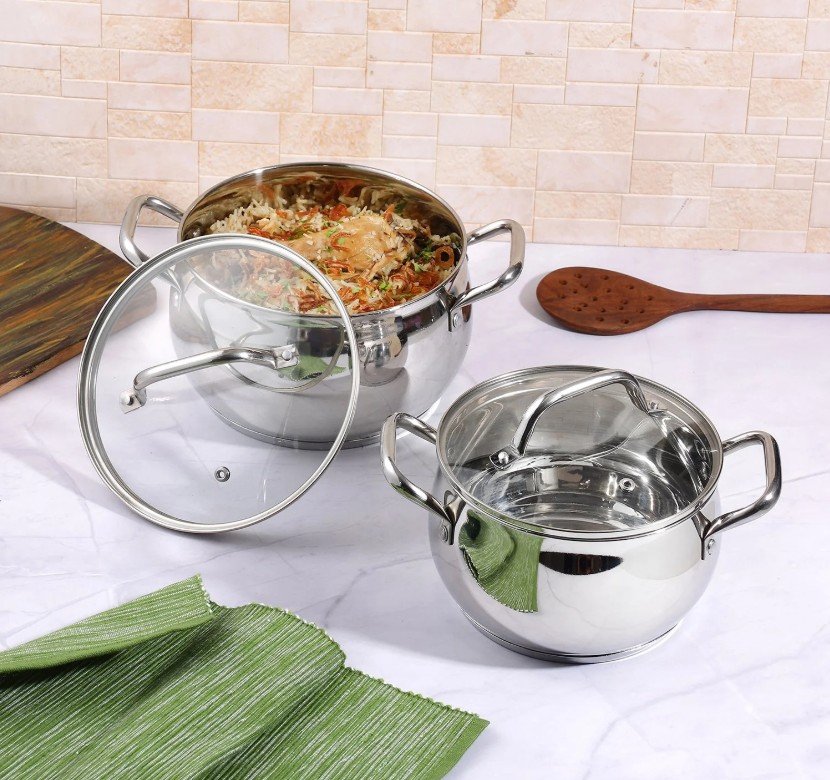Every home cook dreams of creating restaurant-quality meals with ease and confidence. Two essential cookware pieces that can elevate your culinary game are the skillet pan and the casserole dish. Both are versatile, durable, and indispensable in kitchens worldwide. Yet, understanding their unique characteristics and mastering the right cooking techniques can truly transform your dishes from ordinary to extraordinary.
If you want to cook like a pro, learning how to use your skillet pan and casserole correctly is key. This guide breaks down the essentials, helping you get the most flavor, texture, and presentation out of these classic cookware items.
Understanding the Skillet Pan and Casserole
Before diving into techniques, it’s helpful to know what sets these two cookware types apart.
What is a Skillet Pan?
A skillet pan, often made from cast iron, stainless steel, or non-stick materials, is a shallow, wide pan with sloped sides. Its design allows for quick, even heating and easy stirring or flipping. Skillet pans excel in tasks such as searing, frying, sautéing, and browning.
What is a Casserole?
The casserole, on the other hand, refers to a deep, oven-safe dish, usually made of ceramic, glass, or cast iron, sometimes with a lid. It’s perfect for slow-cooked, baked, or layered dishes—think stews, gratins, and baked pasta.
Skillet Pan Techniques to Master
The skillet pan is your go-to for fast, high-heat cooking methods. Here are some expert techniques to maximize its potential:
1. Perfect Searing and Browning
The skillet pan shines when you want to develop a flavorful crust on meats or vegetables. To sear perfectly:
- Preheat the pan until it’s hot but not smoking. This ensures the food immediately starts cooking upon contact.
- Dry your ingredients thoroughly to avoid steaming.
- Use oils with high smoke points like avocado or canola oil for best results.
- Avoid overcrowding the pan to maintain heat.
2. Sautéing with Precision
Sautéing means cooking food quickly over medium-high heat with a small amount of fat.
- Keep ingredients moving using a wooden spoon or spatula.
- Cook similar-sized pieces together for even cooking.
- Season toward the end to prevent moisture loss.
3. Pan-Frying Crispy Goodness
When shallow frying in a skillet, maintain consistent oil temperature to achieve a crispy exterior and moist interior.
- Use a thermometer to monitor oil heat (usually between 350-375°F).
- Don’t flip too early; wait until a golden crust forms.
4. Deglazing and Pan Sauces
After cooking, skillet pans often have tasty browned bits stuck to the surface. These “fond” bits are flavor gold.
- Remove excess fat, then add wine, broth, or vinegar to the hot pan.
- Scrape gently with a wooden spoon to release the fond.
- Reduce to a flavorful sauce to serve alongside your dish.
Casserole Cooking Techniques for Flavorful, Hearty Meals
Casseroles excel in slow, even cooking and are perfect for one-dish meals. Here are techniques to make the most of your casserole dishes:
1. Layering Flavors
Many casseroles rely on layering ingredients like vegetables, proteins, sauces, and toppings.
- Build layers thoughtfully to balance flavors and textures. For example, place denser veggies at the bottom to cook thoroughly.
- Add sauces between layers to keep the dish moist.
2. Slow, Even Baking
Casseroles require consistent heat distribution for thorough cooking.
- Preheat your oven properly.
- Use an oven-safe thermometer to ensure the right temperature throughout cooking.
- Cover with a lid or foil early on to retain moisture, removing it toward the end for browning.
3. Toppings and Crusts
A signature of casseroles is the delicious topping—crumbs, cheese, or crispy breadcrumbs.
- Add toppings during the last 10–15 minutes of baking to prevent burning.
- Mix breadcrumbs with melted butter and herbs for extra flavor and crunch.
4. Resting Before Serving
Allow casseroles to rest for 10–15 minutes after baking.
- This helps the dish set and makes it easier to serve in neat portions.
- Resting also allows flavors to meld beautifully.
Combining Skillet Pan and Casserole Cooking for Impressive Results
Professional chefs often combine both tools for optimal results. Here’s how to do it:
- Start on the skillet pan: Sear or brown meats and vegetables first to develop rich flavors and caramelization.
- Transfer to the casserole: After searing, move the ingredients into the casserole dish for slow baking or braising.
- This combination harnesses the skillet’s intense heat and the casserole’s gentle oven cooking, resulting in deeply flavorful, tender dishes.
For example, a classic beef stew can be initiated by searing chunks in the skillet and finished in the casserole with broth and herbs.
Caring for Your Skillet Pan and Casserole
Proper maintenance extends the life and performance of your cookware.
Skillet Pan Care
- Cast iron skillets: Season regularly by applying a thin layer of oil and heating to build a natural non-stick surface. Avoid soap and dry thoroughly to prevent rust.
- Stainless steel skillets: Clean with warm soapy water and use a stainless steel cleaner for shine.
Casserole Care
- Handle ceramic casseroles gently to avoid chips.
- Avoid drastic temperature changes to prevent cracking.
- Clean with mild detergents and avoid abrasive scrubbers.
Final Thoughts: Master Your Cookware, Master Your Kitchen
Cooking like a pro doesn’t require fancy gadgets—just knowing how to make the most of classic cookware like the skillet pan and casserole.
By mastering skillet techniques such as searing, sautéing, and deglazing, you can create dishes with rich, complex flavors. Meanwhile, learning casserole skills like layering, slow baking, and resting elevates hearty meals perfect for family dinners or gatherings.
